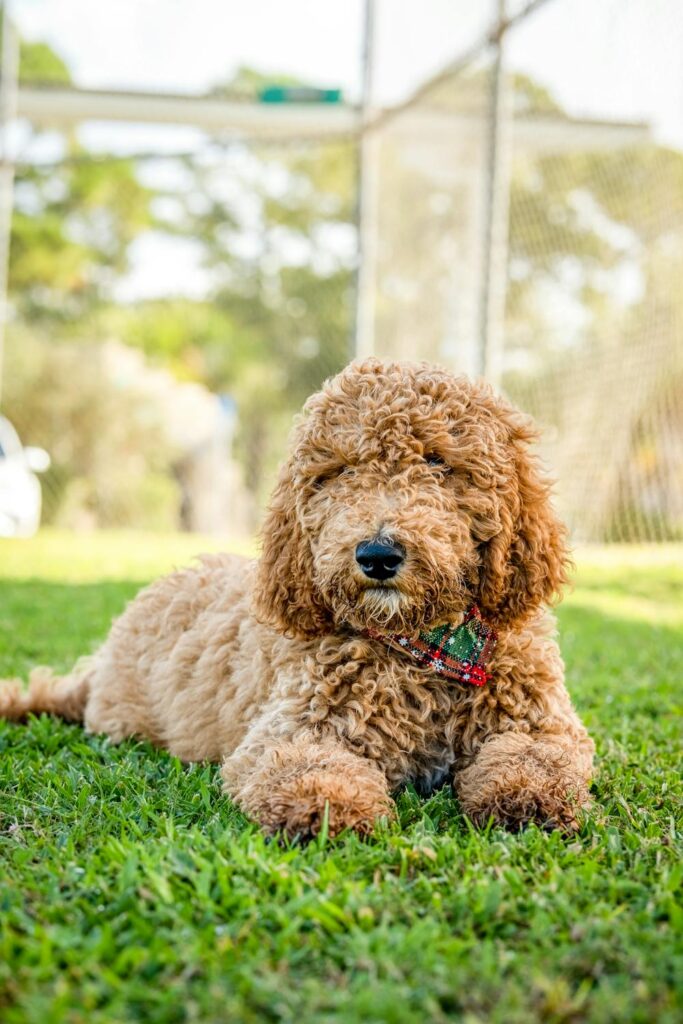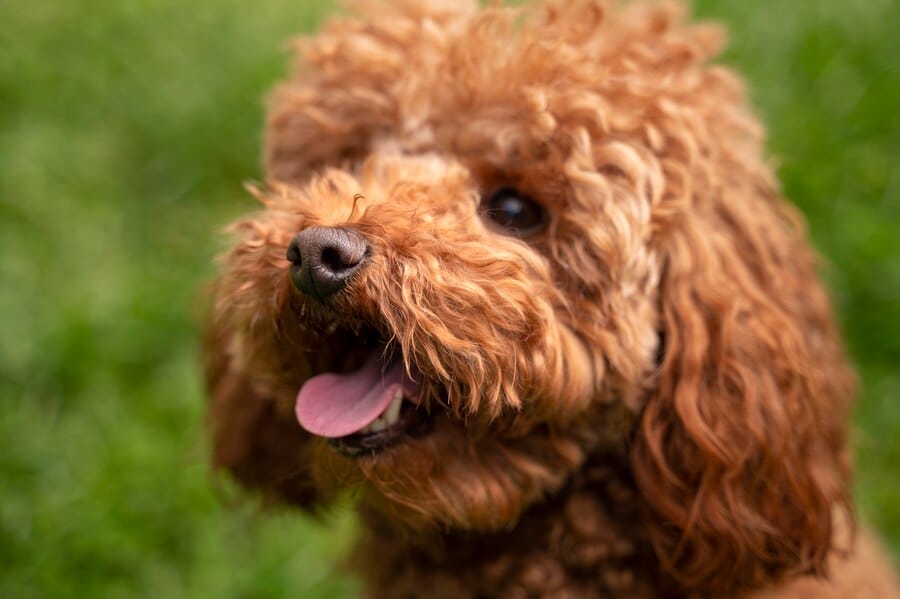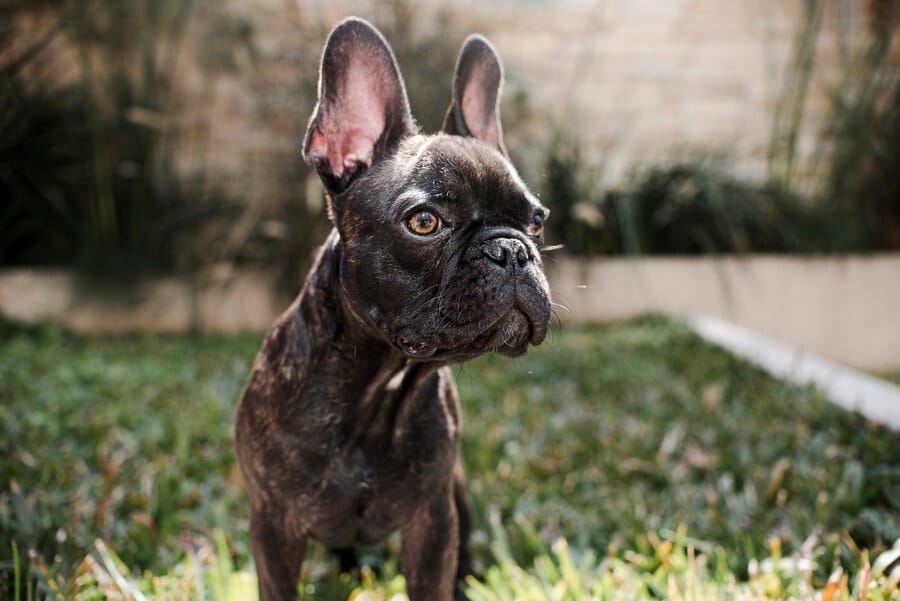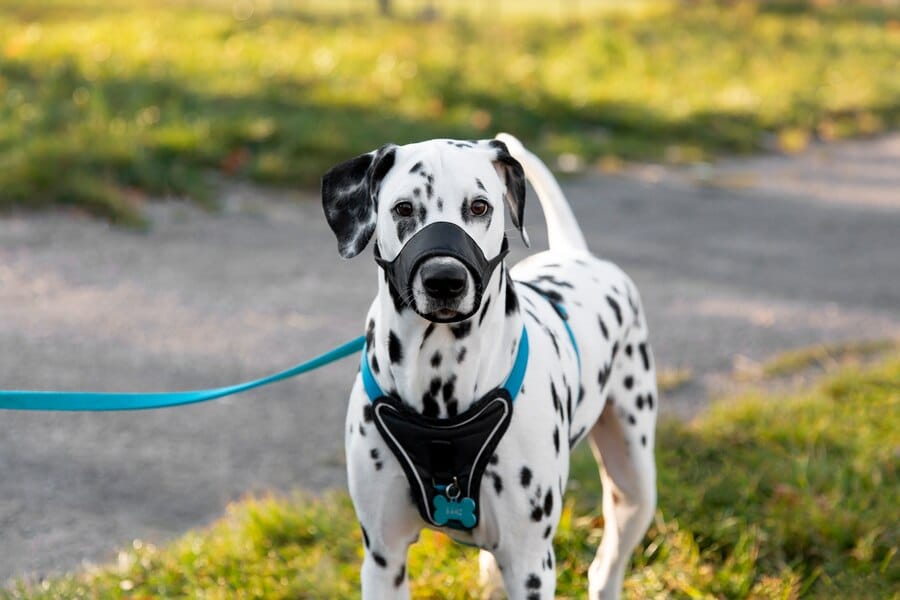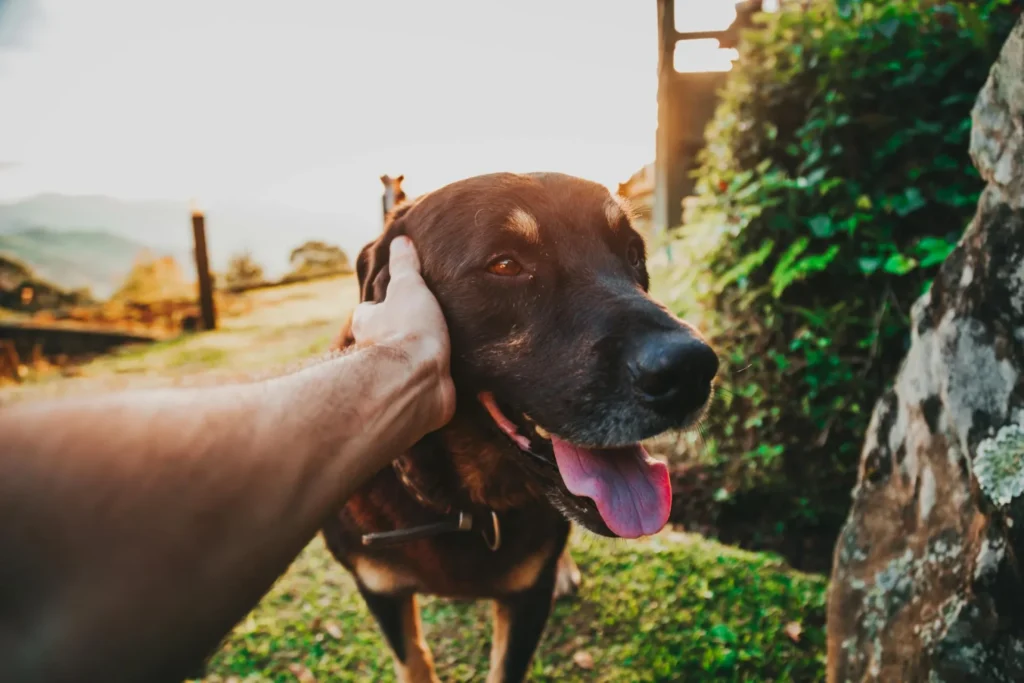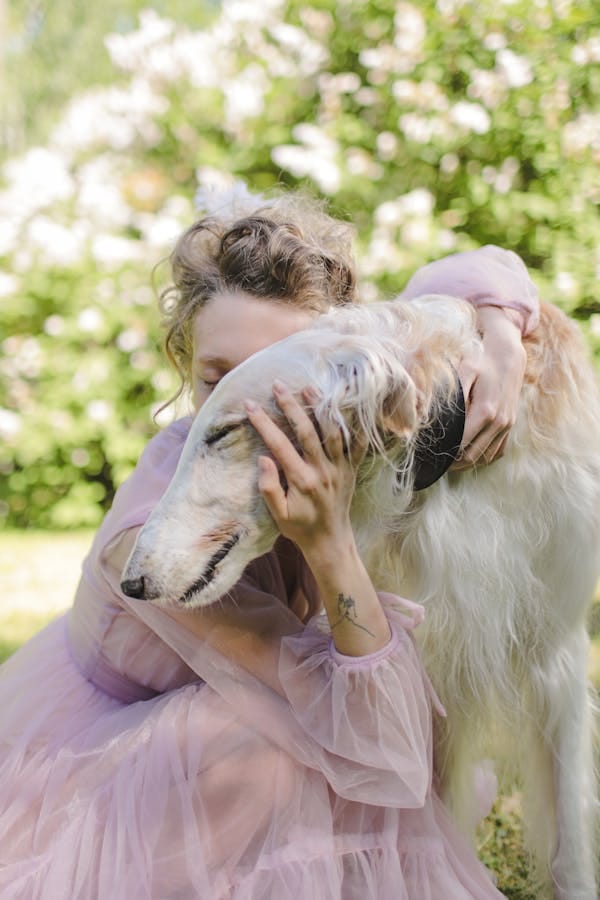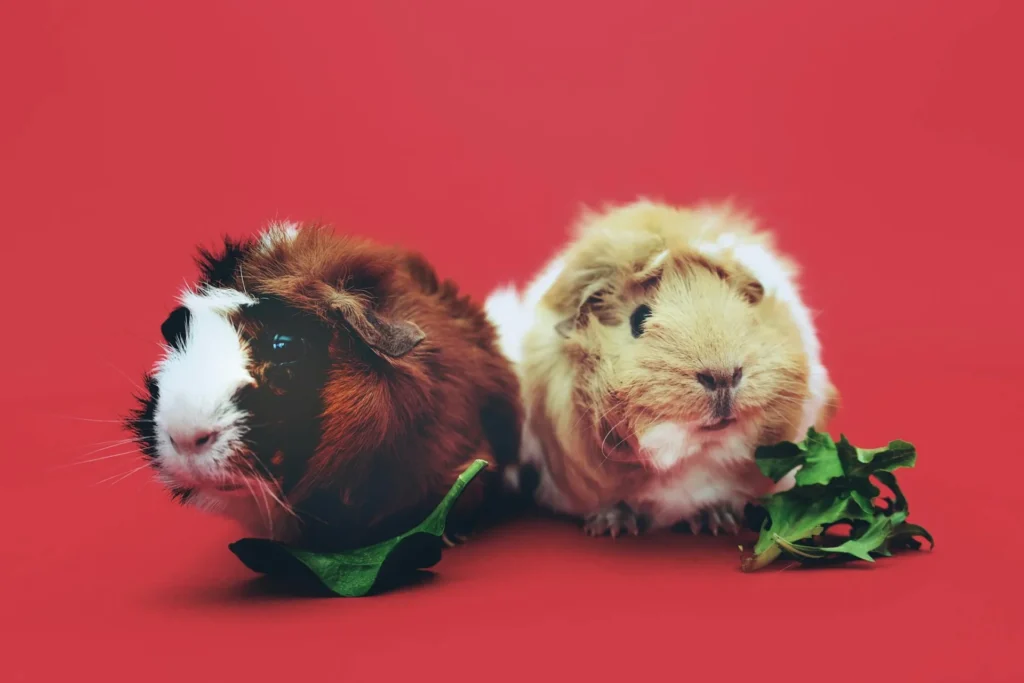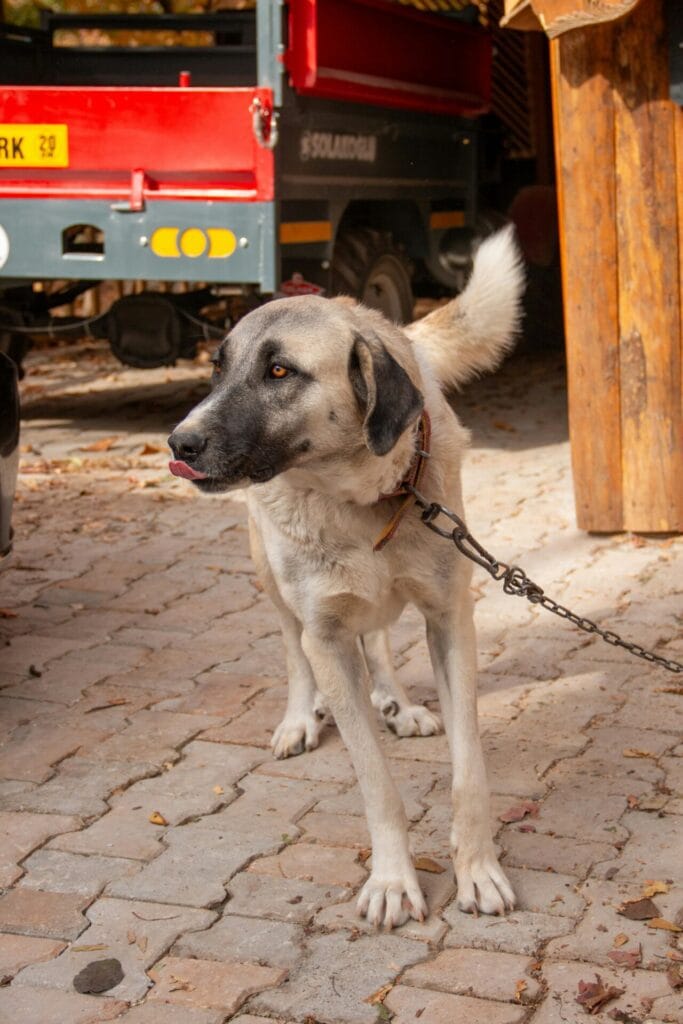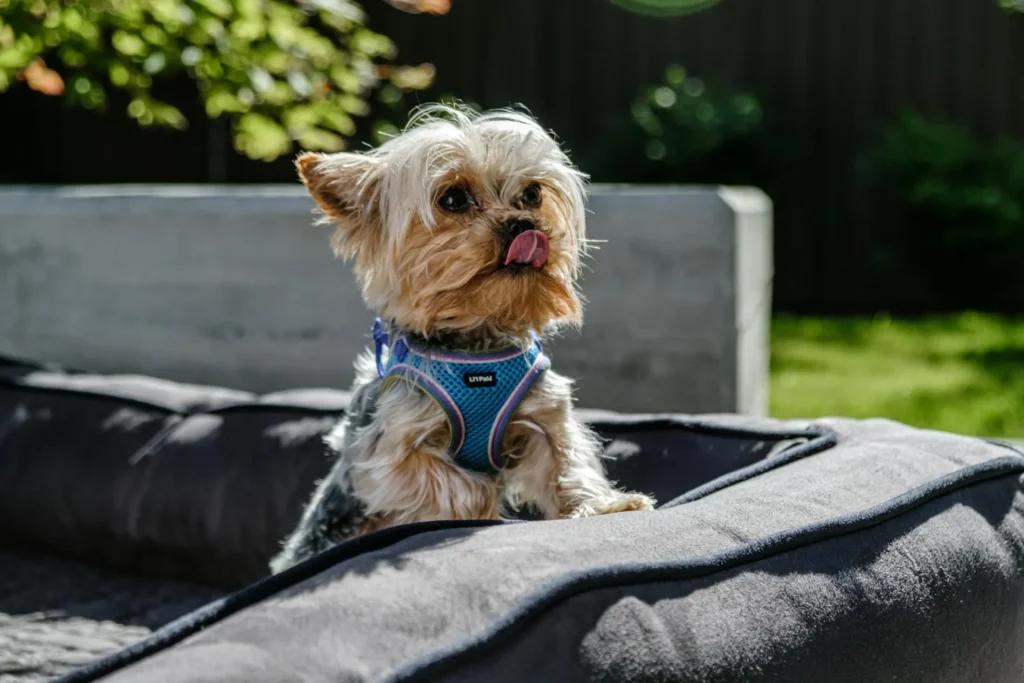- Introduction: The Fascinating World of Dachshund Interactions
- The Dachshund Personality: A Quick Refresher 🐾
- The Big Question: Are Dachshunds Good with Other Dachshunds? 🤔
- Dachshund Varieties: Does Coat Type Matter? 🧵
- Size Matters: Standard vs. Miniature Dachshunds 📏
- The Socialization Factor: Nature vs. Nurture 🌱
- The Age Factor: Puppies, Adults, and Seniors 🐶👴
- Gender Dynamics: Boys and Girls 👫
- The Introduction Process: Setting the Stage for Success 🤝
- Training Challenges: Double Trouble or Dynamic Duo? 🎓
- Exercise Needs: Two Dachshunds, Double the Fun? 🏃♀️
- Health Considerations: Double the Love, Double the Care ❤️
- The Emotional Factor: Companionship and Bonding 💖
- Living Arrangements: Space Considerations for Two Dachshunds 🏠
- Financial Considerations: Budgeting for a Dachshund Duo 💰
- The Social Aspect: Dachshunds in Public 🌳
- Dachshunds and Other Pets: The Dynamics of a Multi-Pet Household 🐱🐰
- Traveling with Two Dachshunds: Adventures with Your Sausage Dog Duo 🚗
- Dachshund-Specific Activities: Double the Fun 🎉
- Common Behavioral Issues with Multiple Dachshunds 🚫
- The Joy Factor: Why Two Dachshunds Might Be Better Than One 😊
- Dachshund Rescue: Adopting a Pair 🏠
- Dachshund Genetics: Understanding Inherited Traits 🧬
- The Impact of Spaying/Neutering on Dachshund Behavior 🏥
- Dachshund Communication: Understanding Canine Body Language 🗣️
- Dachshund Playtime: Encouraging Positive Interactions 🎭
- The Importance of Routine for Two Dachshunds 🕰️
- Grooming Challenges with Multiple Dachshunds 🧼
- Dachshund Variety Compatibility: Mix and Match? 🔀
- The Role of the Owner in Multi-Dachshund Households 👨👩👧👦
- Dachshund Siblings: Littermates vs. Unrelated Pairs 👯♂️
- Dachshund Personality Clashes: When Opposites Don’t Attract 💥
- The Senior Years: Caring for Aging Dachshund Pairs 👵👴
- Dachshund-Specific Training for Pairs 🎓
- The Legal Aspect: Owning Two Dachshunds 📜
- Dachshund Social Groups: Building a Sausage Dog Community 🌭👥
- The Environmental Impact of Multiple Dachshunds 🌍
- Dachshund Competitions: Double the Fun 🏆
- The Psychology of Dachshund Pairs: Emotional Dynamics 🧠
- Dachshund Pair Ownership: A Day in the Life 📅
- The Financial Long-Term: Budgeting for Two Dachshunds Over Time 💰
- Dachshund Pairs: Promoting Bonding and Attachment 💙
- Dachshund Dentistry: Twice the Teeth to Care For 🦷
- Vacationing with Two Dachshunds: Planning and Preparation 🏖️
Introduction: The Fascinating World of Dachshund Interactions
Welcome to the ultimate guide on dachshund-to-dachshund relationships! Whether you’re a seasoned dachshund owner contemplating adding another sausage dog to your family, or simply curious about how these unique pups interact with their own kind, you’re in for a treat. In this comprehensive exploration, we’ll dive deep into the world of dachshund social dynamics, uncovering the pros, cons, and everything in between when it comes to dachshunds living with other dachshunds.
Dachshunds, with their long bodies, short legs, and big personalities, have captured hearts worldwide. But how do they fare when paired with their own kind? Let’s embark on this journey to find out!
The Dachshund Personality: A Quick Refresher 🐾
Before we delve into dachshund-to-dachshund interactions, let’s quickly revisit what makes these dogs tick:
- Brave: Despite their small size, dachshunds are known for their courage.
- Intelligent: They’re quick learners with a knack for problem-solving.
- Stubborn: Their independence can sometimes translate to stubbornness.
- Playful: Dachshunds have a great sense of humor and love to entertain.
- Loyal: They form strong bonds with their families.
- Curious: Their hunting instincts make them naturally inquisitive.
Understanding these traits is crucial as we explore how dachshunds interact with each other.
The Big Question: Are Dachshunds Good with Other Dachshunds? 🤔
The short answer? It depends. Like humans, dachshunds have individual personalities that can greatly influence how well they get along with others of their breed. However, there are some general tendencies we can explore.

Pros of Dachshunds Living with Other Dachshunds 👍
- Similar Energy Levels: Dachshunds often have comparable energy levels, making them good playmates.
- Shared Physical Characteristics: Their similar size and build mean they’re less likely to accidentally hurt each other during play.
- Companionship: Dachshunds are social animals and can benefit from having a canine companion.
- Understanding of Body Language: Dogs of the same breed often communicate more effectively with each other.
- Shared Interests: Two dachshunds might enjoy similar activities, like digging or playing with certain toys.
Cons of Dachshunds Living with Other Dachshunds 👎
- Potential for Rivalry: Dachshunds can be territorial, which might lead to conflicts.
- Amplified Barking: Dachshunds are known for their vocal nature, and two might encourage each other to bark more.
- Resource Guarding: Some dachshunds may become possessive over food, toys, or human attention.
- Stubbornness Doubled: Managing two strong-willed dachshunds can be challenging.
- Potential for Pack Mentality: Two dachshunds might team up in less desirable behaviors.
Dachshund Varieties: Does Coat Type Matter? 🧵
Dachshunds come in three coat varieties: smooth, long-haired, and wire-haired. Let’s explore how these different types might interact:
| Coat Type | Typical Temperament | Interaction with Other Dachshunds |
|---|---|---|
| Smooth | Bold, feisty | May be more prone to assertive behavior |
| Long-haired | Calmer, gentler | Often gets along well with others |
| Wire-haired | Mischievous, outgoing | Playful interactions, but can be stubborn |
While these are general tendencies, remember that individual personality plays a significant role in how dachshunds interact, regardless of coat type.
Size Matters: Standard vs. Miniature Dachshunds 📏
Dachshunds come in two sizes: standard (usually 16-32 pounds) and miniature (usually under 11 pounds). How does size affect their interactions?
| Size | Typical Characteristics | Interaction with Other Dachshunds |
|---|---|---|
| Standard | More confident, robust | May be more assertive, especially with smaller dachshunds |
| Miniature | Often more energetic, can be more timid | May be intimidated by larger dachshunds initially |
When introducing dachshunds of different sizes, it’s important to supervise closely to ensure the smaller dog doesn’t get overwhelmed or accidentally hurt.
The Socialization Factor: Nature vs. Nurture 🌱
While dachshunds have certain breed-specific traits, their behavior towards other dachshunds (and dogs in general) is heavily influenced by their socialization experiences. Let’s break it down:
Nature (Genetic Factors):
- Prey drive
- Independence
- Alertness
Nurture (Environmental Factors):
- Early socialization experiences
- Training consistency
- Exposure to other dogs
- Owner’s behavior and attitude
A well-socialized dachshund is more likely to get along with other dachshunds, regardless of their innate tendencies.
The Age Factor: Puppies, Adults, and Seniors 🐶👴
The age of the dachshunds being introduced can significantly impact their relationship. Let’s explore:
Puppy + Puppy 🐾🐾
- Pros: High energy matches, learn social skills together
- Cons: Can encourage mischief, may bond more with each other than humans
Adult + Adult 🐕🐕
- Pros: Established personalities, calmer interactions
- Cons: Potential for territorial disputes, set in their ways
Senior + Senior 👵👵
- Pros: Companionship, similar energy levels
- Cons: May have health issues, less adaptable to change
Puppy + Adult 🐾🐕
- Pros: Adult can teach puppy manners, puppy can reinvigorate adult
- Cons: Energy level mismatch, adult may not tolerate puppy antics
Puppy + Senior 🐾👵
- Pros: Puppy can provide companionship, senior can offer calm guidance
- Cons: Senior may find puppy overwhelming, risk of injury to senior
Adult + Senior 🐕👵
- Pros: Companionship, potentially good energy match
- Cons: May need to adjust exercise routines, health considerations for senior
Gender Dynamics: Boys and Girls 👫
The gender of the dachshunds can also play a role in their compatibility. Here’s a general overview:
| Combination | Typical Dynamics | Potential Challenges |
|---|---|---|
| Male + Male | Can be competitive | Territory disputes, dominance issues |
| Female + Female | Often get along well | Can be more prone to serious fights if they do clash |
| Male + Female | Often the easiest pairing | Potential for unwanted breeding if not spayed/neutered |
Remember, these are generalizations and individual personalities always play a crucial role.
The Introduction Process: Setting the Stage for Success 🤝
Introducing two dachshunds requires patience and careful management. Here’s a step-by-step guide:
- Neutral Territory: First introductions should be on neutral ground, like a park.
- Leash Control: Keep both dogs on leashes initially, but avoid tension.
- Parallel Walking: Start with walking side by side, allowing sniffing but preventing face-to-face confrontations.
- Observe Body Language: Look for relaxed, playful signals. Intervene if you see signs of stress or aggression.
- Short and Sweet: Keep initial meetings brief and positive.
- Gradual Home Introduction: When bringing a new dachshund home, introduce them to one room at a time.
- Separate Resources: Initially, provide separate feeding areas, beds, and toys to prevent resource guarding.
- Supervise Interactions: Always supervise the dogs until you’re confident in their relationship.
Training Challenges: Double Trouble or Dynamic Duo? 🎓
Training multiple dachshunds can be both rewarding and challenging. Here are some tips:
- Individual Training: Spend one-on-one time training each dachshund.
- Prevent Copying Bad Habits: Address unwanted behaviors quickly to prevent the other dog from mimicking.
- Use Their Companionship: Teach them to respond to commands as a pair.
- Prevent Resource Guarding: Train “leave it” and “drop it” commands thoroughly.
- Encourage Independence: Teach them to be comfortable when separated.
Remember, consistency is key when training dachshunds, known for their stubborn streak!
Exercise Needs: Two Dachshunds, Double the Fun? 🏃♀️
Dachshunds are energetic dogs that need regular exercise. Having two can be beneficial:
- Pros: They can play together, motivate each other to exercise.
- Cons: They might encourage each other in unwanted behaviors (like excessive digging).
Aim for at least 30-60 minutes of exercise daily, which can include:
- Walks
- Playtime in a secure yard
- Indoor games on rainy days
Remember to adjust exercise based on age and health status.
Health Considerations: Double the Love, Double the Care ❤️
When you have two dachshunds, health management becomes even more crucial:
- Back Problems: Dachshunds are prone to Intervertebral Disc Disease (IVDD). Ensure both dogs maintain a healthy weight and avoid high-impact activities.
- Dental Care: Regular teeth cleaning is important for both dogs.
- Vaccinations: Keep both dogs up-to-date on vaccinations to prevent spread of diseases.
- Parasite Prevention: Regular deworming and flea/tick prevention is crucial.
- Regular Check-ups: Annual vet visits for both dogs can catch potential issues early.
Having two dachshunds means being extra vigilant about these common health concerns.
The Emotional Factor: Companionship and Bonding 💖
Dachshunds are known for their loyalty and affection. How does having two impact their emotional well-being?
Pros:
- Companionship when owners are away
- Potential reduction in separation anxiety
- Increased opportunities for play and socialization
Cons:
- Risk of the dogs bonding more with each other than with humans
- Potential for one dog to become overly dependent on the other
To ensure a healthy emotional balance:
- Spend one-on-one time with each dog
- Encourage independent play and rest times
- Ensure each dog has their own safe space
Living Arrangements: Space Considerations for Two Dachshunds 🏠
While dachshunds are small, having two does require some space considerations:
- Multiple Beds: Provide separate beds, even if they choose to share sometimes.
- Feeding Stations: Set up separate feeding areas to prevent food aggression.
- Toy Storage: Have plenty of toys available to prevent resource guarding.
- Outdoor Space: A secure yard is ideal, but not necessary if you provide adequate walks and indoor play.
- Crates: Individual crates can provide safe spaces and aid in house training.
Remember, while dachshunds don’t need a lot of space, they do need mental and physical stimulation to prevent boredom and destructive behaviors.
Financial Considerations: Budgeting for a Dachshund Duo 💰
Owning two dachshunds naturally comes with increased costs. Here’s a breakdown:
| Expense Category | Estimated Annual Cost (Per Dog) | Notes |
|---|---|---|
| Food | $300 – $600 | Depends on quality of food |
| Veterinary Care | $200 – $1000 | Includes regular check-ups and potential emergencies |
| Toys and Supplies | $100 – $300 | Includes beds, leashes, toys |
| Grooming | $30 – $500 | Depends on coat type and whether professional grooming is used |
| Training | $50 – $500 | Depends on whether professional training is sought |
While some costs (like toys) can be shared, most expenses will double with two dogs. It’s important to budget accordingly.
The Social Aspect: Dachshunds in Public 🌳
Taking two dachshunds out in public can be a unique experience:
Pros:
- Double the cuteness factor
- Can provide confidence to a more timid dog
- Potential for adorable matching outfits
Cons:
- More challenging to control on leashes
- Increased likelihood of barking (dachshunds can encourage each other)
- More clean-up required
Tips for successful outings:
- Train loose-leash walking individually before trying tandem walks
- Use a double dog leash for better control
- Bring plenty of treats for positive reinforcement
- Start with short trips and gradually increase duration
Dachshunds and Other Pets: The Dynamics of a Multi-Pet Household 🐱🐰
If you’re considering adding two dachshunds to a household with other pets, here are some factors to consider:
| Pet Type | Potential Dynamics | Tips for Harmony |
|---|---|---|
| Cats | Can be challenging due to prey drive | Slow introductions, provide high places for cats |
| Larger Dogs | May work well with proper introductions | Supervise interactions, prevent roughhousing |
| Small Animals (rabbits, guinea pigs) | High prey drive can be dangerous | Keep separated, always supervise any interactions |
| Birds | May trigger prey drive | Keep caged birds out of reach |
Remember, the personality of each individual animal plays a significant role in these dynamics.
Traveling with Two Dachshunds: Adventures with Your Sausage Dog Duo 🚗
Traveling with two dachshunds can be fun but requires extra planning:
- Car Safety: Use secured crates or dog seatbelts for both dogs.
- Accommodations: Ensure your lodging is pet-friendly and can accommodate two dogs.
- Packing: Bring familiar items (toys, beds) to help them feel secure.
- Identification: Ensure both dogs have up-to-date ID tags and microchips.
- Schedule: Maintain their regular feeding and exercise schedule as much as possible.
Dachshund-Specific Activities: Double the Fun 🎉
Having two dachshunds opens up opportunities for breed-specific activities:
- Earthdog Trials: These events tap into dachshunds’ natural hunting instincts.
- Dachshund Races: Many communities hold these fun events.
- Agility (Modified): Low-impact agility can be great mental and physical exercise.
- Scent Work: Taps into their hunting instincts in a safe, controlled way.
Participating in these activities can strengthen your bond with both dogs and provide excellent stimulation.
Common Behavioral Issues with Multiple Dachshunds 🚫
While having two dachshunds can be wonderful, it can also amplify some common behavioral issues:
- Excessive Barking: Dachshunds may encourage each other to bark more.
Solution: Consistent training, addressing the root cause of barking. - Digging: Two dachshunds might team up to create larger holes.
Solution: Provide a designated digging area, increase mental stimulation. - Separation Anxiety: They may become overly dependent on each other.
Solution: Train them to be comfortable alone, gradually increase separation times. - Resource Guarding: Competition for resources may increase.
Solution: Provide plenty of resources, train “leave it” and “drop it” commands. - Pack Mentality in Negative Behaviors: They might team up in unwanted behaviors.
Solution: Consistent training, addressing issues immediately.
The Joy Factor: Why Two Dachshunds Might Be Better Than One 😊
Despite the challenges, many owners find that having two dachshunds brings double the joy:
- Constant Entertainment: Their interactions can be endlessly amusing.
- Increased Socialization: They provide each other with canine companionship.
- Shared Adventures: Activities and outings become family affairs.
- Comfort for Each Other: They can provide support during stressful times (like vet visits).
- Double the Love: More dachshund snuggles and affection!
Dachshund Rescue: Adopting a Pair 🏠
Considering adopting two dachshunds? Here’s what you should know:
- Bonded Pairs: Many rescues have bonded pairs of dachshunds that need to be adopted together. These dogs already have an established relationship, which can be beneficial.
- Background Check: Rescues often provide detailed information about the dogs’ history, temperament, and how they interact with each other.
- Senior Pairs: Consider adopting senior dachshunds. They often have lower energy levels and established personalities, making them easier to integrate.
- Trial Period: Many rescues offer a trial period to ensure the dogs are a good fit for your home.
- Support Network: Rescue organizations often provide ongoing support and resources for adopters.
Remember, adopting two dachshunds at once is a significant commitment. Ensure you’re prepared for the responsibility before making the decision.
Dachshund Genetics: Understanding Inherited Traits 🧬
When considering two dachshunds, it’s important to understand how genetics play a role in their behavior and health:
- Coat Type: Determined by genetics, affects grooming needs and potentially temperament.
- Size: Standard or miniature, influenced by genetics.
- Color: Various color combinations are possible.
- Health Predispositions: Some genetic health issues are more common in dachshunds.
- Temperament Tendencies: While environment plays a huge role, some personality traits have a genetic component.
If you’re getting two dachshunds from the same litter, be aware that they may share both positive and negative genetic traits.
The Impact of Spaying/Neutering on Dachshund Behavior 🏥
Spaying or neutering can affect how dachshunds interact with each other:
Pros of Spaying/Neutering:
- Reduces likelihood of same-sex aggression
- Eliminates risk of unwanted breeding
- Can calm certain behaviors
Cons of Spaying/Neutering:
- May affect energy levels
- Can potentially increase risk of certain health issues if done too early
Consult with your vet about the best time to spay/neuter your dachshunds.
Dachshund Communication: Understanding Canine Body Language 🗣️
Two dachshunds living together will communicate constantly. Understanding their body language is crucial:
- Tail Position: High and wagging (happy), tucked (fearful), stiff and high (alert/aggressive)
- Ear Position: Perked (attentive), flat against head (fearful/submissive)
- Body Posture: Relaxed (comfortable), stiff (tense/alert)
- Facial Expressions: Relaxed mouth (content), bared teeth (warning)
- Vocalizations: Barks, growls, whines all communicate different things
Learning to read these signals can help you understand the dynamics between your dachshunds and intervene if necessary.
Dachshund Playtime: Encouraging Positive Interactions 🎭
Playtime is crucial for bonding between dachshunds. Here are some tips:
- Supervised Play: Always monitor play sessions, especially initially.
- Appropriate Toys: Provide toys that encourage cooperative play.
- Interrupt Rough Play: Step in if play becomes too rough or one dog seems overwhelmed.
- Reward Good Behavior: Praise and treat calm, friendly interactions.
- Separate Play: Ensure each dog also has solo play sessions with you.
Remember, play should be fun and stress-free for both dogs.
The Importance of Routine for Two Dachshunds 🕰️
Establishing a routine is crucial when you have two dachshunds:
- Feeding Times: Regular, separate feeding times prevent food aggression.
- Walk Schedule: Consistent walk times help manage energy levels.
- Training Sessions: Regular training reinforces good behavior.
- Playtime: Scheduled play helps prevent boredom and destructive behavior.
- Bedtime Routine: A consistent bedtime routine can reduce anxiety and improve sleep.
A predictable routine helps both dogs feel secure and can prevent behavioral issues.
Grooming Challenges with Multiple Dachshunds 🧼
Grooming needs will depend on your dachshunds’ coat types, but here are some general considerations:
- Bathing: You may need to bathe them separately to ensure thorough cleaning.
- Nail Trimming: This can be a two-person job with anxious dogs.
- Teeth Cleaning: Regular dental care is crucial for both dogs.
- Ear Cleaning: Especially important for long-haired and wire-haired dachshunds.
- Brushing: Frequency depends on coat type, but regular brushing is important for all.
Grooming can be a bonding experience, but some dogs may become jealous. Consider grooming them separately if this becomes an issue.
Dachshund Variety Compatibility: Mix and Match? 🔀
If you’re considering two dachshunds of different varieties, here’s how they might interact:
| Combination | Potential Dynamics | Considerations |
|---|---|---|
| Smooth + Long-haired | Often compatible | Different grooming needs |
| Smooth + Wire-haired | Can work well | Smooth may be more active |
| Long-haired + Wire-haired | Generally good match | Very different grooming needs |
| Standard + Miniature | Can work with supervision | Size difference requires careful introductions |
Remember, individual personality always plays a bigger role than variety in determining compatibility.
The Role of the Owner in Multi-Dachshund Households 👨👩👧👦
As the owner, your role is crucial in ensuring harmony between your dachshunds:
- Be the Leader: Establish yourself as the pack leader to both dogs.
- Fairness: Treat both dogs equally to prevent jealousy.
- Individual Attention: Spend one-on-one time with each dog.
- Consistent Rules: Enforce the same rules for both dogs.
- Positive Reinforcement: Reward good behavior in both dogs.
- Conflict Resolution: Step in calmly to resolve any conflicts.
Your consistent, fair leadership will set the tone for your dachshunds’ relationship.
Dachshund Siblings: Littermates vs. Unrelated Pairs 👯♂️
Adopting dachshund siblings can be tempting, but it comes with unique challenges:
Littermate Syndrome: This refers to behavioral issues that can arise when two puppies from the same litter are raised together. It can include:
- Extreme attachment to each other
- Fear of unfamiliar people, dogs, or situations
- Difficulty learning basic obedience
Unrelated Pairs: Adopting two unrelated dachshunds or spacing out adoptions can help avoid these issues.
If you do adopt siblings, it’s crucial to:
- Train them separately
- Socialize them individually
- Ensure they have independent experiences
Dachshund Personality Clashes: When Opposites Don’t Attract 💥
Sometimes, despite our best efforts, two dachshunds may simply not get along. Signs of a personality clash include:
- Frequent fights or aggressive behavior
- One dog constantly bullying the other
- Extreme anxiety in one or both dogs
- Resource guarding escalating to dangerous levels
- One dog becoming depressed or withdrawn
If you’re experiencing ongoing issues, consult with a professional dog behaviorist. In some cases, rehoming one of the dogs may be the kindest solution for everyone involved.
The Senior Years: Caring for Aging Dachshund Pairs 👵👴
As your dachshunds age, their needs and dynamics may change:
- Health Challenges: One dog may develop health issues before the other.
- Energy Level Changes: Differences in energy can strain the relationship.
- Cognitive Decline: Canine cognitive dysfunction can affect behavior.
- Increased Dependency: The healthier dog may take on a caretaker role.
- End-of-Life Considerations: Losing one dog can deeply affect the other.
Strategies for caring for senior dachshund pairs:
- Regular vet check-ups for both dogs
- Adjust exercise and play to accommodate both dogs’ abilities
- Provide mental stimulation appropriate for their age
- Be prepared to give extra attention to both the ailing and healthy dog
Dachshund-Specific Training for Pairs 🎓
Training two dachshunds together requires some breed-specific considerations:
- Prey Drive Management: Train a solid “leave it” command to control their hunting instincts.
- Barking Control: Teach “quiet” commands to manage their vocal tendencies.
- Leash Training: Focus on loose-leash walking to prevent back strain.
- Recall Training: Essential for safety, especially given their stubborn streak.
- Socialization: Expose them to various people, animals, and situations to prevent fearfulness.
Remember to train them both individually and together for best results.
The Legal Aspect: Owning Two Dachshunds 📜
Before getting two dachshunds, consider these legal and practical aspects:
- Lease Agreements: Some rentals have pet limits or breed restrictions.
- Homeowners Insurance: Some policies may have breed-specific clauses.
- Local Laws: Check local regulations on the number of dogs allowed per household.
- Licensing: Ensure both dogs are properly licensed with your local authority.
- Liability: Consider additional liability insurance for pet owners.
Being aware of these factors can prevent future legal issues.
Dachshund Social Groups: Building a Sausage Dog Community 🌭👥
Connecting with other dachshund owners can be beneficial:
- Playdates: Organized meetups for dachshunds to socialize.
- Support Network: Share advice and experiences with other owners.
- Breed-Specific Events: Participate in dachshund races or costume contests.
- Online Communities: Join dachshund-focused social media groups.
- Training Classes: Look for classes specifically for small breeds or even dachshund-specific training.
These connections can provide valuable resources and socialization opportunities for you and your dogs.
The Environmental Impact of Multiple Dachshunds 🌍
Owning two dachshunds does have an environmental footprint:
- Food Consumption: Increased demand for pet food production.
- Waste: More waste to manage and dispose of responsibly.
- Product Consumption: Increased use of toys, beds, and other pet products.
- Carbon Footprint: Potential increase from vet visits, grooming appointments, etc.
To minimize impact:
- Choose eco-friendly pet products
- Buy food in bulk to reduce packaging
- Use biodegradable poop bags
- Consider making homemade treats to reduce packaging waste
Dachshund Competitions: Double the Fun 🏆
Participating in dog competitions with two dachshunds can be exciting:
- Conformation Shows: Showcase your dachshunds’ adherence to breed standards.
- Obedience Trials: Demonstrate your dogs’ training and responsiveness.
- Rally: A more relaxed form of obedience competition.
- Earthdog Trials: Allow your dachshunds to showcase their natural hunting abilities.
- Scent Work: Competitions that utilize their keen sense of smell.
Competing with two dogs can be challenging but rewarding. It’s a great way to bond with your dachshunds and meet other enthusiasts.
The Psychology of Dachshund Pairs: Emotional Dynamics 🧠
Understanding the psychological aspects of dachshund pairs can help you better manage their relationship:
- Attachment: Dachshunds may form strong attachments to each other, which can be both positive and challenging.
- Hierarchy: Dogs naturally establish a hierarchy, which may shift over time.
- Jealousy: Like humans, dogs can experience jealousy, especially over owner attention.
- Empathy: Dogs can pick up on each other’s emotional states, potentially amplifying both positive and negative feelings.
- Learning: Dogs often learn behaviors from each other, both good and bad.
Being aware of these dynamics can help you create a harmonious household.
Dachshund Pair Ownership: A Day in the Life 📅
To give you a realistic picture, here’s what a typical day might look like with two dachshunds:
6:00 AM: Wake up, morning potty break
6:30 AM: Breakfast (fed separately)
7:00 AM: Morning walk
8:00 AM – 12:00 PM: Rest/nap time (humans at work)
12:00 PM: Midday potty break/short play session
1:00 PM – 5:00 PM: Rest/nap time
5:00 PM: Evening walk
6:00 PM: Dinner (fed separately)
7:00 PM: Play time/training session
9:00 PM: Final potty break
10:00 PM: Bedtime
Remember, this is just an example. Your schedule will depend on your lifestyle and your dogs’ needs.
The Financial Long-Term: Budgeting for Two Dachshunds Over Time 💰
Let’s look at the potential costs of owning two dachshunds over their lifetime (assuming a 12-15 year lifespan):
| Expense Category | Estimated Lifetime Cost (For Two Dogs) | Notes |
|---|---|---|
| Food | $36,000 – $90,000 | Varies greatly based on food quality |
| Veterinary Care | $24,000 – $120,000 | Includes regular care and potential emergencies |
| Grooming | $3,600 – $60,000 | Depends on whether you groom at home or professionally |
| Toys and Supplies | $12,000 – $36,000 | Includes beds, leashes, toys, etc. |
| Training | $600 – $6,000 | Depends on extent of professional training |
| Insurance | $14,400 – $36,000 | If you choose to insure your dogs |
Total Estimated Lifetime Cost: $90,600 – $348,000
These are rough estimates and actual costs can vary greatly. It’s important to be financially prepared for the long-term commitment of owning two dachshunds.
Dachshund Pairs: Promoting Bonding and Attachment 💙
While it’s important for your dachshunds to get along, you also want to ensure they bond with you. Here are some strategies:
- Individual Training Sessions: Strengthens your bond with each dog.
- One-on-One Playtime: Special play sessions with each dog individually.
- Separate Walks: Occasionally walk each dog separately.
- Feeding Time Interaction: Use mealtimes as bonding opportunities.
- Sleeping Arrangements: Consider having them sleep in separate beds near you.
Remember, a strong bond with you can actually help your dachshunds feel more secure and get along better with each other.
Dachshund Dentistry: Twice the Teeth to Care For 🦷
Dental health is crucial for dachshunds. With two, you’ll need to double your dental care efforts:
- Daily Brushing: Ideally, brush both dogs’ teeth daily.
- Dental Chews: Provide dental chews to help clean teeth.
- Regular Check-ups: Schedule regular dental check-ups with your vet.
- Watch for Signs of Dental Issues: Bad breath, difficulty eating, or pawing at the mouth.
- Professional Cleanings: Budget for professional dental cleanings as recommended by your vet.
Good dental health can prevent a host of other health issues and keep your dachshunds comfortable and happy.
Vacationing with Two Dachshunds: Planning and Preparation 🏖️
Taking a vacation with two dachshunds requires extra planning:
- Pet-Friendly Accommodations: Ensure your lodging accepts two dogs.
- Travel Safety: Use secure travel crates or car harnesses for both dogs.
- Packing List: Double up on essentials like food, medications, and favorite toys.
- ID and Vaccinations: Ensure both dogs have up-to-date ID tags and required vaccinations.
- Exercise Plans: Research dog-friendly areas at your destination for walks and play.
- Emergency Preparedness: Know the location of veterinary facilities at your destination.
With proper planning, vacationing with your dachshund duo can be a wonderful experience.

